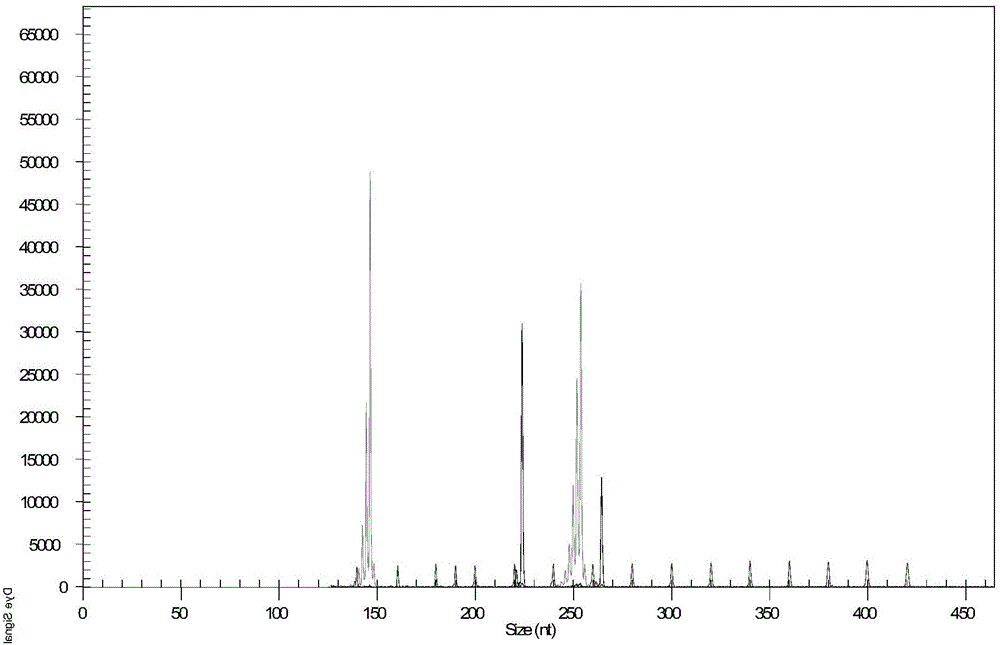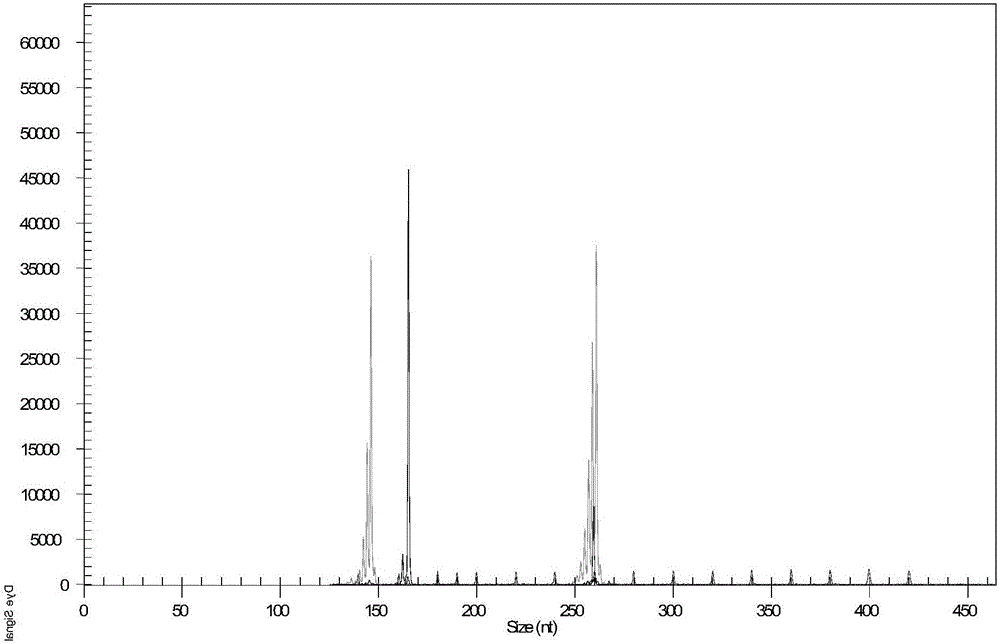High-throughput malt purity identification technology based on capillary electrophoresis and SSR marker
A capillary electrophoresis, high-throughput technology, applied in the biological field, can solve problems such as prone to errors, and achieve the effects of improved detection efficiency, high sensitivity, and efficient methods
- Summary
- Abstract
- Description
- Claims
- Application Information
AI Technical Summary
Problems solved by technology
Method used
Image
Examples
Embodiment 1
[0034] Embodiment 1: Construction of malt fingerprint
[0035] Barley samples from 17 different origins were selected, germinated and dried to make malt.
[0036] Table 1. 17 kinds of malt samples
[0037]
[0038] (1) extract the test sample DNA
[0039] Randomly sample from the malt samples, and use the CTAB method to extract the DNA of the test samples: take a single-grain malt sample in a 1.5ml centrifuge tube, about 25-45mg, add 7-8mm steel balls, and use the Thmorgan CK1000D high-throughput tissue grinder. smash. Add 600ul of CTAB extraction buffer preheated at 65°C to the sample, vortex and mix to lyse the sample. Since malt is rich in proteins, polysaccharides, polyphenols and other substances, it is difficult to separate, so add 4ul β-mercaptoethanol and 1% PVP (polyvinylpyrrolidone) to prevent polyphenols from oxidative browning and DNA degradation, and effectively remove polyphenols and polysaccharides . Water bath at 65°C for 15 minutes, during which time s...
Embodiment 2
[0050] Example 2: Purity identification of commercial malt Copeland samples
[0051] The SSR primer set includes 3 pairs of SSR primers, which are respectively HVM68, Bmag0007 and EBmac755; the sequences of the 3 pairs of SSR primers are as follows:
[0052]
[0053] Utilize above-mentioned three pairs of SSR primers to carry out the method for the commercial malt Copeland sample of purchase to carry out purity identification, comprise the following steps:
[0054] (1) Randomly select 96 grains of malt from the Copeland malt sample, prepare malt DNA, fluorescent multiplex PCR amplification, capillary gel electrophoresis detection, and data analysis. The specific implementation steps are as in steps (1)-(4) of Example 1 ).
[0055] (2) Result analysis: compare the electrophoretic patterns amplified by the three pairs of fluorescent primers of each grain of malt DNA of the sample to be tested with the fingerprints of Copeland malt respectively. The results showed that the e...
Embodiment 3
[0056] Example 3: Purity Identification of Commercial Malt Commander Samples
[0057] Different from Example 2,
[0058] (1) Randomly select 96 grains of malt from the Commander malt sample, prepare malt DNA, fluorescent multiplex PCR amplification, capillary gel electrophoresis detection, and data analysis. The specific implementation steps are as in steps (1)-(4) of Example 1 ).
[0059] (2) Result analysis: compare the electrophoretic patterns amplified by three pairs of fluorescent primers of each grain of malt DNA of the sample to be tested with Commander malt fingerprints respectively. The results showed that the electrophoretic patterns of 90 of the 96 malts were consistent with the fingerprint data of Commander malt, and the SSR loci were 141bp, 224bp, and 267bp respectively. The peak characteristics of the other 6 malts were consistent, and the SSR loci were 146bp, 224bp and 257bp, indicating that other varieties were mixed, so the malt purity of this batch of Comma...
PUM
 Login to View More
Login to View More Abstract
Description
Claims
Application Information
 Login to View More
Login to View More - R&D
- Intellectual Property
- Life Sciences
- Materials
- Tech Scout
- Unparalleled Data Quality
- Higher Quality Content
- 60% Fewer Hallucinations
Browse by: Latest US Patents, China's latest patents, Technical Efficacy Thesaurus, Application Domain, Technology Topic, Popular Technical Reports.
© 2025 PatSnap. All rights reserved.Legal|Privacy policy|Modern Slavery Act Transparency Statement|Sitemap|About US| Contact US: help@patsnap.com



